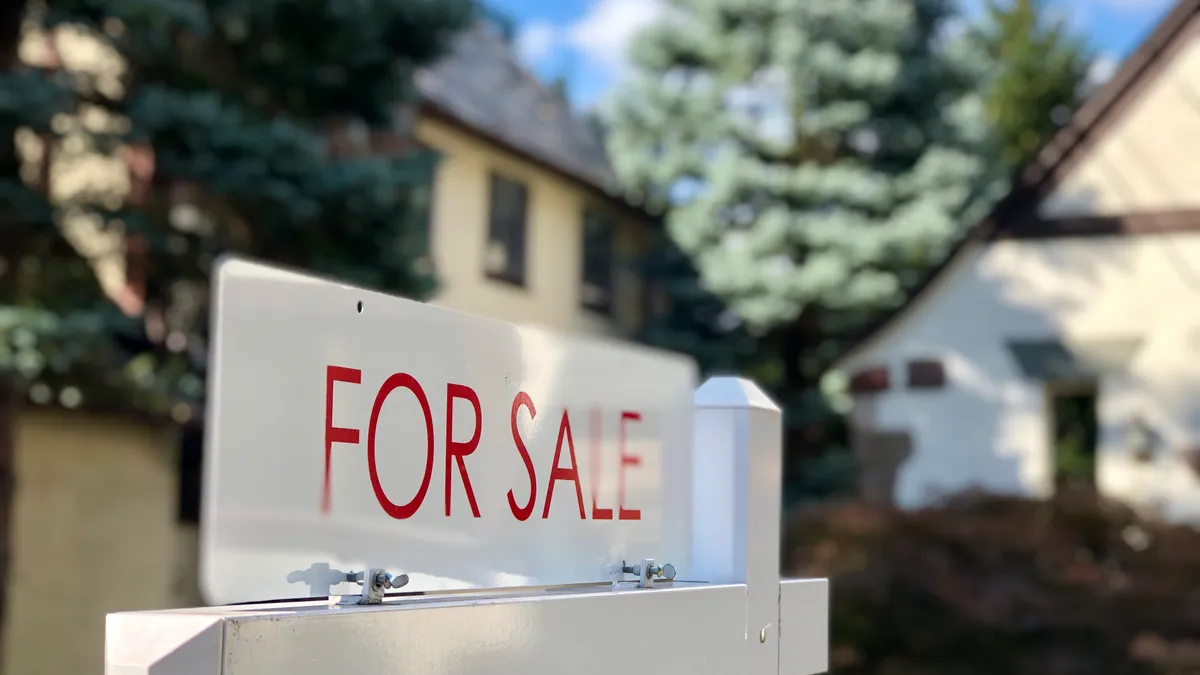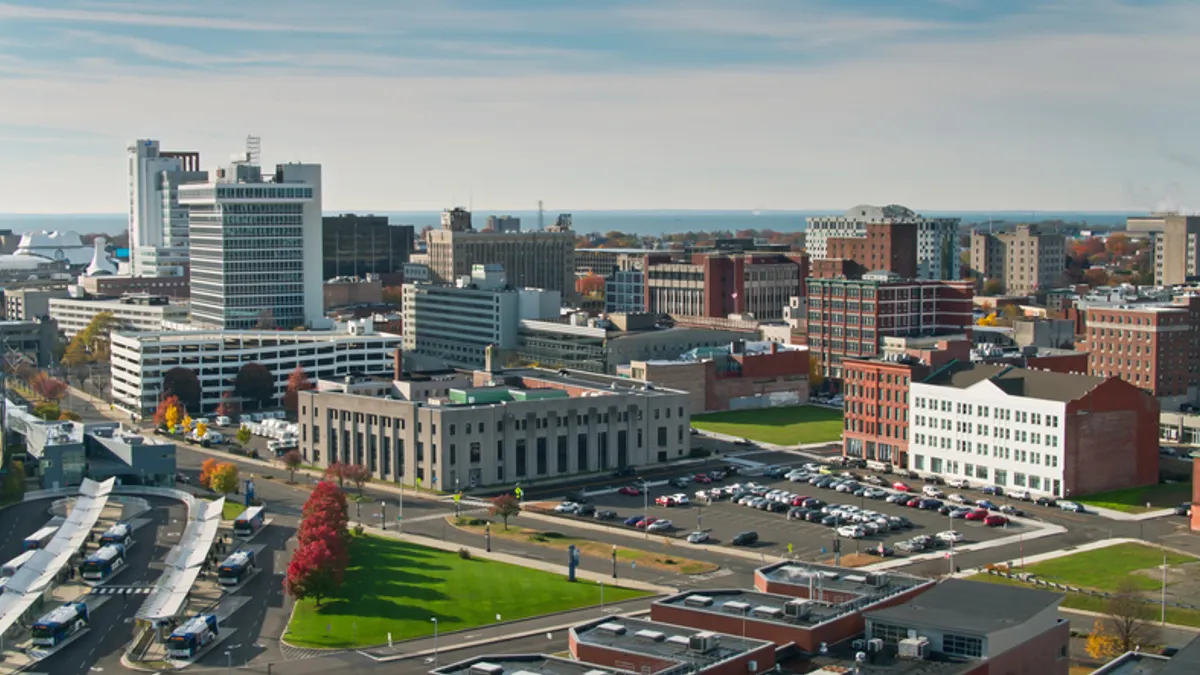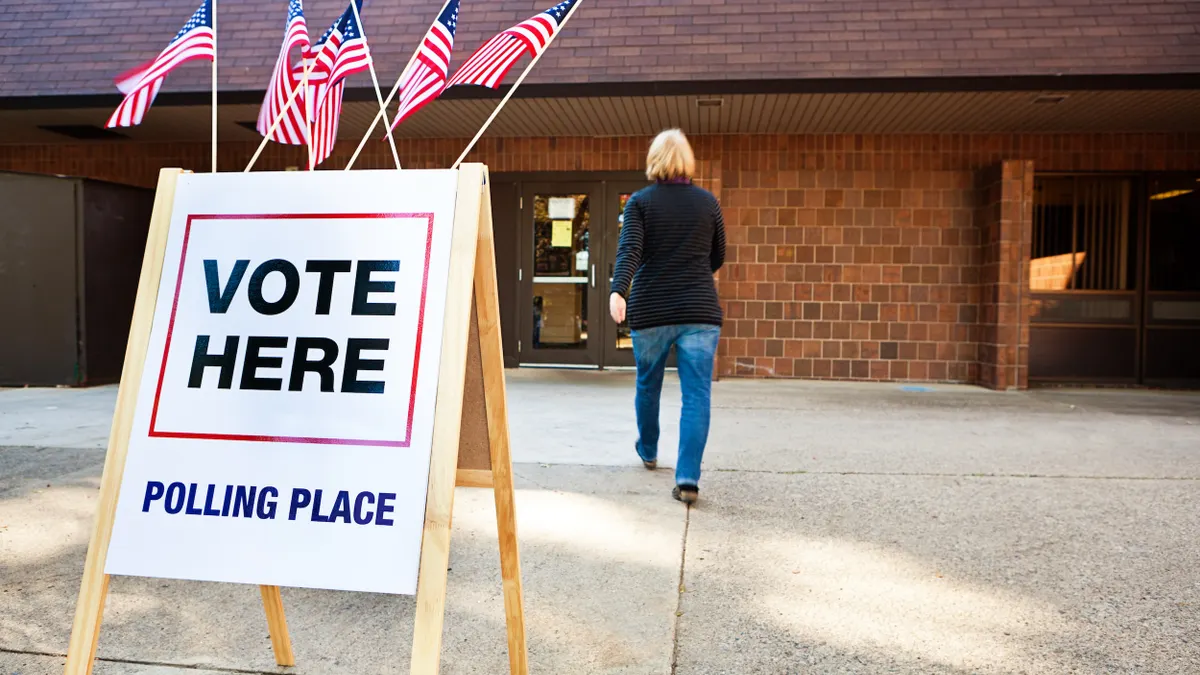The U.S. homeownership rate had its largest-ever annual increase in 2020, according to a recent report from the National Association of Realtors (NAR). However, mirroring historical trends, White families became homebuyers at a much higher rate than racial minorities, specifically Black families, during that time.
Housing experts say the racial disparities are largely due to systemic barriers that have prevented Black families from buying a home for decades. Discriminatory policies and practices, some of which continue today, have allowed White families to build wealth over generations, making it easier for future generations to also purchase a home. However, there are steps that cities and the federal government can take to alleviate the disparities, experts say.
“Our nation’s housing policies favor Whites, helping them to more securely become homeowners,” said Nikitra Bailey, senior vice president of public policy at the National Fair Housing Alliance.
In total, the U.S. homeownership rate surged to 65.5% in 2020, a 1.3% year-over-year increase with 2.6 million more households becoming homeowners compared with 2019, the report states. Within that, the homeownership rate for White homebuyers was 72.1% in 2020, versus the 43.4% rate among Black owners. In fact, the homeownership rate for Black families in 2020 was nearly a percentage point lower than it was in 2010.
The booming housing market has been driven by record-low mortgage rates and pent-up demand and lifestyle shifts during the pandemic, said Nadia Evangelou, a senior economist and director of forecasting at NAR, in an email.
An increased number of higher-paid positions turned remote during the pandemic, shifting people’s preference for more space at their homes, added Sophie House, director of law and policy at the New York University Furman Center’s Housing Solutions Lab.
That demand continued through 2021, which is considered “the best year for the housing market since 2006,” said Evangelou.
However, inventory reached record lows in 2021, making homeownership largely unattainable for many households, she added. In 2021, there was one affordable listing for every 65 households earning $75,000 to $100,000, compared with 2019 when there was one affordable listing for every 24 households, said Evangelou. According to the report, nearly half of all Asian Americans and 35% of White Americans earn more than $100,000 per year, versus 25% of Hispanic Americans and 20% of Black Americans.
Racial disparity rooted in discrimination
Evangelou said one cause for the homeownership disparities is that Black adults are more likely than White adults to carry student loans and other debts.
Student loan debt affects many people’s decision to buy a home or their eligibility for a home loan, she said. That makes it even more difficult for people to save for a down payment and qualify for a mortgage. Due to higher debt-to-income ratios and low credit scores, Black and Hispanic adults are more likely to be denied a mortgage, Evangelou added.
House cited a University of Chicago study that found that, among people in their mid-20s who attended four-year public college, every additional $1,000 in student loan debt a person has makes them about 1.8% less likely to own a home.
“Having to pay off student loans – or any kind of debt – makes it more difficult to dedicate savings to future down payments,” House said in an email.
The racial wealth gap exacerbates those challenges across generations, House added. Due to parental wealth, White households on average carry smaller debt burdens and higher credit scores, she said. They are also more likely to receive help from parents with down payments.
The Urban Institute last year predicted that over the next two decades, the largest decline in homeownership rates will be among younger Black households.
Understanding the homeownership disparity of today requires an understanding of the discriminatory policies and practices of the past.
Past discriminatory practices such as redlining — in which the Federal Housing Administration (FHA) refused to insure mortgages in or near Black neighborhoods — have shaped racial wealth disparities and contributed to the homeownership gap, House said.
“What we’re seeing today is depressed values of homes in neighborhoods of color,” Bailey said.
Following the Great Depression, the FHA also subsidized builders to mass-produce developments that were effectively available to White buyers only. At the same time, Black veterans returning home from World War II were largely unable to access low-interest mortgages and loans through the GI Bill. White households that purchased homes using federal subsidies were able to build wealth that helped future generations of White families become homeowners.
Discriminatory practices remain in place today surrounding home appraisals that significantly undervalue homes owned by Black households or are located in majority-Black neighborhoods. Likewise, racial steering directs prospective homeowners to different neighborhoods based on race, said House. Black households are also more likely to be denied a conventional mortgage application than similarly qualified White households.
The lasting impacts of discriminatory policies and bank closures in Black neighborhoods have forced many Black families to tap into higher-cost predatory loans, which can negatively affect credit scores, said Bailey.
The gentrification of certain neighborhoods also factors into the racial homeownership divide.
In areas in which Black people comprise over 40% of the total population, the Black homeownership rate is 50% on average, said Evangelou. But in areas with a 20% to 30% Black population, the Black homeownership rate drops to 46%. This shows that Black Americans tend to purchase homes in areas with a higher concentration of other Black people, she said.
In some small or mid-sized cities, such as Grand Rapids, Michigan, Black homeownership rates have declined due to homeowners leaving the city, transitioning to renting or aging out of their homes into assisted living, said House.
Some faster-growing cities, such as Reno, Nevada, are gaining new Black residents but its Black renter population is expanding faster than its Black homeowner population, House said. Those cities “may need to develop strategies to ensure equitable growth and access to homeownership,” she said.
Local and federal solutions
Cities should implement a range of policies that produce and preserve dedicated affordable housing units, as well as increase the supply of market-rate non-rental housing units, House said.
“Race-conscious housing policies favoring Whites created today’s economic disparities and only race-conscious remedies can fix that."

Nikitra Bailey
Senior vice president of public policy at the National Fair Housing Alliance
They can also take steps to help households afford to buy homes, while also guarding against displacement and poor housing conditions. Growing cities could provide down payment assistance for first-time homebuyers or provide education and guidance through the home-buying process, she said. Additionally, cities with declining populations or home values could apply strategies that allow homeowners to remain in their homes, such as foreclosure prevention or home repair assistance programs, House said.
The Build Back Better bill before the U.S. Senate would provide $10 billion toward a first-generation down payment fund that would generate “significant opportunities for first-generation homebuyers,” said Bailey. That legislation is stalled in Congress.
Evangelou said closing the homeownership gap will require the construction of more homes, particularly in opportunity zones, or economically distressed communities, so they can be revitalized. The NAR also advocates for an increase in down payment assistance, more federal funding for FHA loans and expanded alternative credit scoring models to include rent and utility payments.
Bailey also said that cities should look at their own potentially restrictive and exclusionary zoning ordinances and see whether they lock families of color out of pricier neighborhoods or segregate Black neighborhoods to areas where there are environmental health issues.
“Race-conscious housing policies favoring Whites created today’s economic disparities and only race-conscious remedies can fix that,” said Bailey.




















